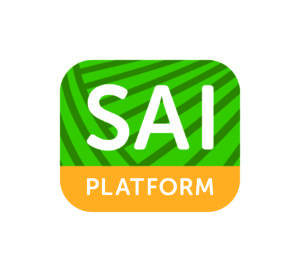Share this page
SAI Platform: dairy supply-chain collaborating to shift sustainability performance on farm
How can dairy buyers and dairy processors work together to improve sustainability at farm?

Alignment with SDGs
AUTHOR
Patricia Garcia Diaz SAI Platform • Switzerland
Abstract
The B2B Model for sustainable dairy is the result of the output of a pre-competitive and trustworthy cooperation between dairy buyers and processors on sustainability. Without recreating any new standards, the B2B Model builds on the Dairy Sustainability Framework and its 11 criteria. It provides a credible approach to foster and demonstrate continuous improvement and compliance to the Dairy sustainability framework (DSF).
The model aims to focus and streamline farm improvement efforts by reducing the needs of multiple and misaligned audits at farm level. It reduces costs for processors and buyers, facilitates efficient sourcing and achieve measurable progress against sustainability priorities.
The development of the B2B model was initiated in 2017, together with companies that represent 25% of the total milk volume. In 2018 the model was tested by 5 of the largest dairy processors in Europe, the US and Australia. Today, in 2019 we are finalizing the model to be ready to use in commercial relationships among the first wave of users.
After concluding the five pilots, we have validated how the model streamlines the communication between dairy buyers and processors. It recognizes national and company programs without recreating new standards and it leverages existing relationships among dairy farmers and processors.
The B2B model recognizes national and company programs without recreating new standards and it leverages exiting relationships among dairy farmers and processors.
Patricia Garcia Diaz Tweet
The value of SAI Platform
The model provides a win-win situation for all parties involved and allows more effort to be focused on improvements at the farm level. Dairy processors and their supplying farmers can prioritise effort on what really matters to their business rather than in fulfilling multiple differing demands from their customers. Dairy buyers can demonstrate impact of their suppliers at farm level, reward good performance and collaborate with their suppliers in addressing their challenges.

What’s next?
In 2019 the model is being refined and used by members of the Dairy working group from the SAI Platform: Sustainable Agricultural Platform to prepare it for wider use. The model will be ready and open for use by the global dairy industry in early 2020.
Conclusion
The Let’s Eat Healthy initiative is one vehicle for bringing people together to find creative solutions to address adaptive challenges such as those presented during the COVID-19 pandemic. Through efforts to improve access to school meals during the onset of the pandemic, innovation to make nutrition education more accessible during extended school closures, and the integration of nutrition education and food access through creative partnerships, Dairy Council of California activated the Let’s Eat Healthy initiative to find solutions to improve nutrition and access to milk and dairy foods in the school environment.
Further information






